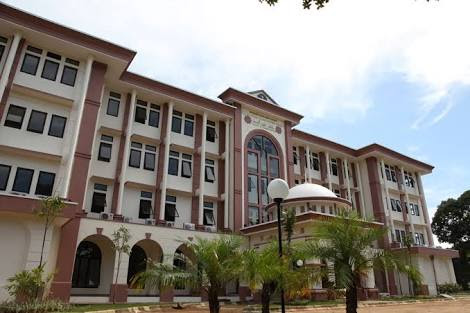ANALYSIS OF MATHEMATICAL CREATIVE THINKING ABILITY OF MIDDLE SCHOOL STUDENTS ON DATA PRESENTATION MATERIALS
ANALISIS KEMAMPUAN BERPIKIR KREATIF MATEMATIS SISWA SMP PADA MATERI PENYAJIAN DATA
Abstract
This article is the result of research that aims to find out how students' mathematical creative thinking abilities solve questions related to data presentation material. This research uses a quantitative approach with descriptive methods. Data presentation material is one of the mathematical materials contained in the basic competencies that must be mastered by class VII students and is closely related to everyday life. In this study, the population consisted of students of class VII at a state junior high school in the city of Tangerang for the 2022/2023 academic year. Selection of the sample utilizing purposive sampling with 34 students of class VII-D. Data collection techniques by giving creative thinking tests in the form of descriptions that were previously validated. The results of this study showed that the students' mathematical creative thinking test scores were 20.6% in the high category, 67.6% in the medium category, and 11.4% in the low category.
Downloads
References
Anwar, M. N., Rasool, S. S., & Haq, R. (2012). A comparison of creative thinking abilities of high and low achievers secondary school students. International Interdisciplinary Journal of Education, 1(1). Retrieved from https://iijoe.org/v1/IIJE_04_v1_i1_2012.pdf.
Apriyanti, H. (2014). Implementasi pendekatan pembelajaran saintifik untuk meningkatkan hasil belajar siswa pada mata pelajaran matematika. [Skripsi]. Universitas Pendidikan Indonesia.
Ashabulkahfi, Y. C. (2020). Deskripsi kemampuan berpikir kreatif dalam menyelesaikan soal bangun datar pada siswa kelas VIII SMP Negeri 3 Sungguminasa. [Thesis]. Universitas Muhammadiyah Makassar.
Chairani, Z. (2016). Metakognisi siswa dalam pemecahan masalah matematika. Yogyakarta: Deepublish.
Depdiknas. (2006). Permendiknas No. 22 Th. 2006 tentang standar isi untuk satuan pendidikan dasar dan menengah. La Sociedad de La Sociedad, 1–175. Retrieved from https://asefts63.files.wordpress.com/2011/01/permendiknas-no-22-tahun2006-standar-isi.pdf.
Desti, E., Anggoro, B. S., & Suherman. (2018). Pengaruh berpikir kreatif terhadap kemampuan memecahkan masalah matematika. Prosiding Seminar Nasional Matematika Dan Pendidikan Matematika UIN Raden Intan Lampung, 1(2), 1-8. Retrieved from https://ejournal.radenintan.ac.id/index.php/pspm/article/view/2504.
Effendi, K. N. S. (2017). Pemahaman Konsep Siswa Kelas VIII Pada Materi Kubus Dan Balok. Symmetry: Pasundan Journal of Research in Mathematics Learning and Education, 2(4), 87–94. https://doi.org/10.23969/symmetry.v2i2.552.
Fajriah, N., & Asiskawati, E. (2015). Kemampuan Berpikir kreatif siswa dalam pembelajaran matematika menggunakan pendekatan pendidikan matematika realistik di SMP. EDU-MAT: Jurnal Pendidikan Matematika, 3(2), 157–165. https://doi.org/10.20527/edumat.v3i2.643.
Febrianti, Y., Djahir, Y., & Fatimah, S. (2016). Analisis kemampuan berpikir kreatif peserta didik dengan memanfaatkan lingkungan pada mata pelajaran ekonomi di SMA Negeri 6 Palembang. Jurnal Profit, 3(1), 121–127. Retrieved from https://ejournal.unsri.ac.id/index.php/jp/issue/view/591.
Gafour, O. W. A., & Gafour, W. A. S. (2020). Creative Thinking skills-A Review article. Retrieved from https://www.boostskills.eu/files/5-creative-thinkings-kills-analysis-article.pdf.
Habibi, M. (2018). Pengaruh model pembelajaran reciprocal teaching terhadap kemampuan berpikir kreatif siswa di sekolah menengah pertama swasta muslimat yayasan pendidikan wanita islam kota Jambi. [Thesis]. Universitas Islam Negeri Sulthan Thaha Saifuddin.
Hidayati, H. A., & Munandar, D. R. (2021). Analisis kemampuan pemecahan masalah matematis siswa kelas VIII dalam menyelesaikan soal cerita pola bilangan. Prosiding Seminar Nasional Matematika Dan Pendidikan Matematika , 469–477. Retrieved from http://conference.unsika.ac.id/index.php/sesiomadika/Sesiomadika2021.
Hu, R., Wu, Y. Y., & Shieh, C. J. (2016). Effects of virtual reality integrated creative thinking instruction on students’ creative thinking abilities. Eurasia Journal of Mathematics, Science and Technology Education, 12(3), 477–486. https://doi.org/10.12973/eurasia.2016.1226a.
Lee, K.-H. (2005). The relationship between creative thinking ability and creative personality of preschoolers. International Education Journal, 6(2), 194–199. Retrieved from http://iej.cjb.net.
Lince, R. (2016). Strategi peningkatan profesionalisme guru dalam menghadapi tantangan di era digital. Prosiding Temu Ilmiah Nasional Guru (Ting) VIII, November, 164-179.
Munandar. (2004). Mengembangkan bakat dan kreativitas anak sekolah petunjuk bagi orang tua dan guru. Jakarta: Grasindo.
Permendikbud. (2018). Peraturan menteri pendidikan dan kebudayaan republik indonesia nomor 58. Jakarta: Kementerian Pendidikan dan Kebudayaan.
Piaw, C. Y. (2014). Effects of gender and thinking style on student’s creative thinking ability. Procedia - Social and Behavioral Sciences, 116, 5135–5139. https://doi.org/10.1016/j.sbspro.2014.01.1087.
Rachmawati, T. K., Kusnadi, F. N., & Sugilar, H. (2021). Kemampuan pemahaman matematis siswa pada materi trigonometri. SJME (Supremum Journal of Mathematics Education), 5(2), 170–178. https://doi.org/10.35706/sjme.v5i2.5140.
Samura, A. ode. (2019). Kemampuan berpikir kritis dan kreatif matematis melalui pembelajaran berbasis masalah. Journal of Mathematics and Science, 5(1), 20–28.
Sitorus, J. (2016). Students’ creative thinking process stages: Implementation of realistic mathematics education. Thinking Skills and Creativity, 22.
Snoopi, L. (2018). Pengaruh pendekatan contextual teaching and learning (CTL) terhadap kemampuan berpikir kritis matematis siswa kelas IX SMP Negeri 1 Sanga Desa (MUBA). [Thesis]. Universitas Islam Negeri Raden Fatah.
Sugiyono. (2012). Metode penelitian kuantitatif kualitatif dan R&D. Bandung: Alfabeta.
Suparman. (2017). Pengembangan bahan ajar berbasis pendekatan matematika realistik indonesia dalam memfasilitasi kemampuan berfikir kreatif siswa pada pokok bahasan bentuk-bentuk aljabar kelas VII MTs Madani Pao-pao Kabupaten Gowa. [Thesis]. UIN Alaudin Makassar.
Wang, C.-W., Wu, J.-J., & Horng, R.-Y. (1999). Creative thinking ability, cognitive type, and R&D performance. Blackwell Publisher Ltd, 29(3), 247–254. https://doi.org/10.1111/1467-9310.00134.
Copyright (c) 2023 Rika Mulyati Mustika Sari; Rahmat Iqbal

This work is licensed under a Creative Commons Attribution 4.0 International License.

